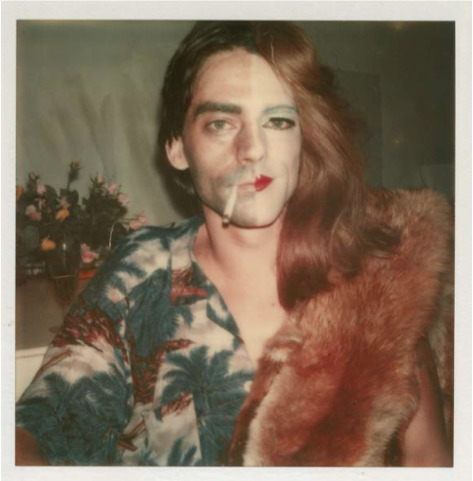#ulay
Text
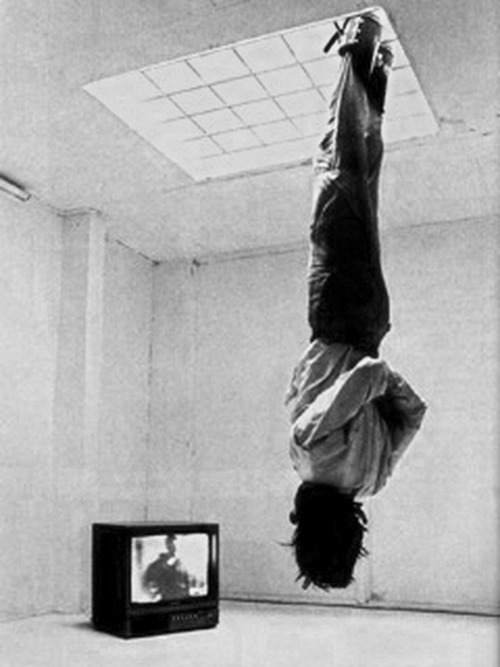
Marina Abramovic y Ulay, The World is My Country. The Sex Life of Flowers, 1982
726 notes
·
View notes
Photo
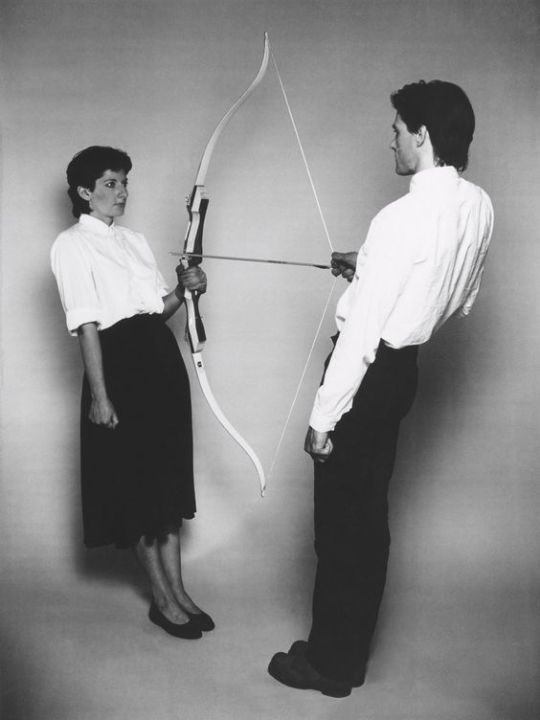
Marina Abramović and ULAY: Rest Energy (1980)
#marina abramovic#ulay#rest energy#1980#80s#1980s art#80s art#arrow#performance art#art#artist#photography#photo#performance#performance piece#performance artist#black and white#b&w
1K notes
·
View notes
Text
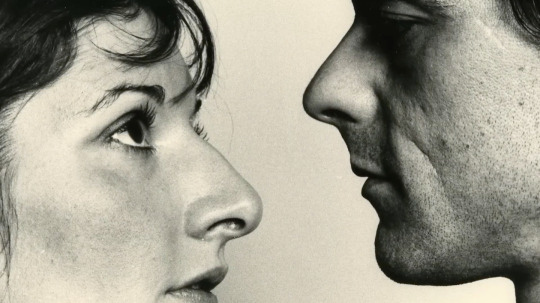
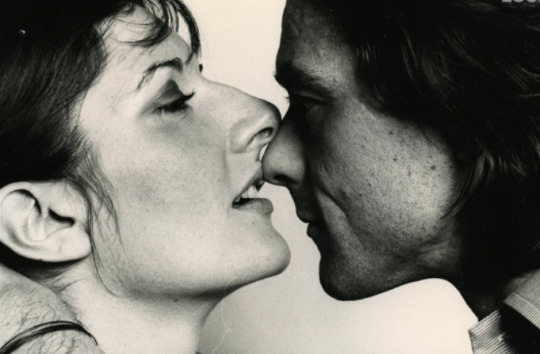
marina abramović and ulay
529 notes
·
View notes
Text
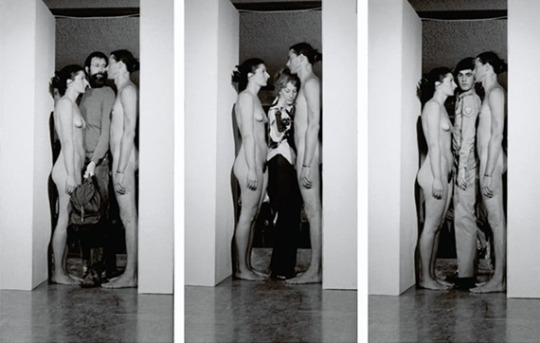
Imponderabilia, performance par Marina Abramović et Ulay, 1977
#couple#sur le vif#homme#allure#performance#marina abramović#marina abramovic#ulay#nude photos#nude art
252 notes
·
View notes
Text
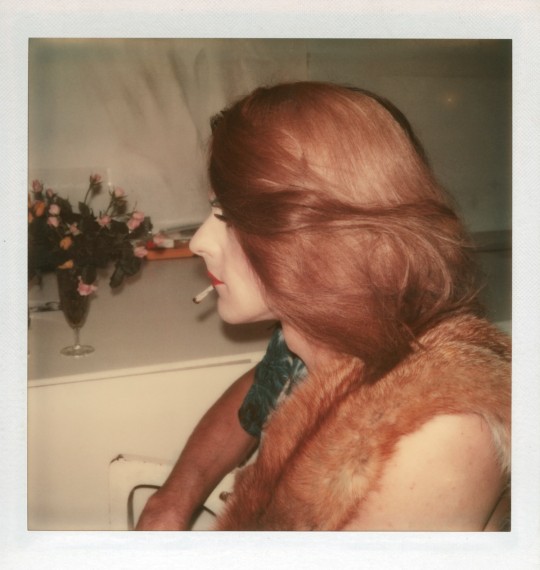

ULAY | S’HE SERIES [1973-74]
136 notes
·
View notes
Text

Marina Abramovic (Serbian, b. 1946) and Ulay (Frank Uwe Laysiepen) (German, 1943-2020)
That Self – Point of Contact
1980
Performance au De Appel Art Centre, Amsterdam
© Adagp, Paris 2015
Courtesy Marina Abramovic Archives
262 notes
·
View notes
Text

Marina Abramović and Ulay, Rest Energy, 1980
#contemporary art#contemporary artist#art#artist#photo#performance#marina abramovic#ulay#rest energy
181 notes
·
View notes
Text
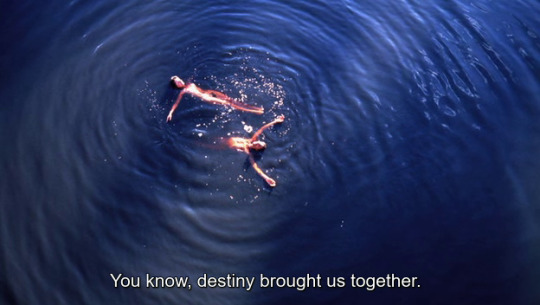
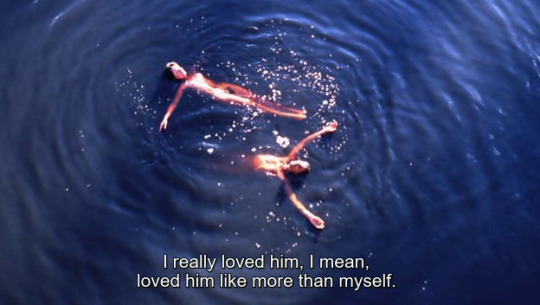
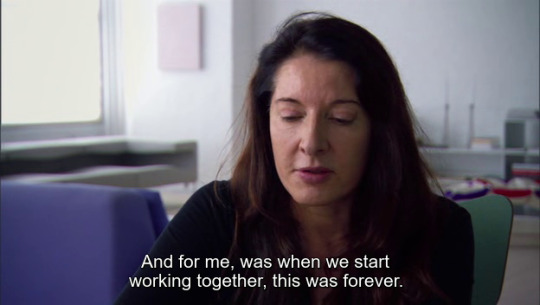
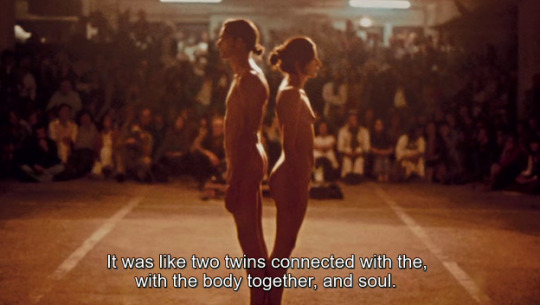



129 notes
·
View notes
Text
Marina Abramovic Relents and Adapts a Provocative Piece for Today
1970s has been altered to suit contemporary mores. “Really, the smart thing to do is compromise,” the artist said.

For a presentation of Marina Abramovic’s 1977 work “Imponderabilia” at the Royal Academy in London, an alternative doorway is provided if visitors do not wish to pass close by two naked performers.Credit...David Parry/Royal Academy of Arts, London
By Alex Marshall
Reporting from London
Sept. 25, 2023
In June 1977, visitors to the Gallery of Modern Art in Bologna, Italy, were met with a shocking sight: Marina Abramovic, the Serbian performance artist, and her partner, Ulay, standing in the museum’s doorway, completely naked.
The only way inside was to squeeze between the couple.
Abramovic and Ulay remained in place for three hours, staring intently into each other’s eyes, as a stream of visitors pushed through and sometimes stepped on their toes. Then, the police arrived, and shut down the performance as obscene.
This fall, Abramovic, now 76, is restaging that work, “Imponderabilia,” at the Royal Academy of Arts, in London, as part of a major retrospective of her work that runs through Jan. 1, 2024. Since Abramovic no longer performs the work herself, and Ulay died in 2020, she has recruited younger performers to take part — and there is another major difference from the 1977 piece.
If a visitor would rather not squeeze past a naked man and woman in a three-foot-wide doorway, they can walk through another entryway to the left, and skip the experience entirely.
In an age when museums are grappling with how to show audiences challenging work, and adopting measures to protect artists and staff, Abramovic is also adapting her old works to suit contemporary mores.
On a recent morning, most visitors chose that nonconfrontational route, until Sarah Raper, 59, gave her coat to her husband and announced: “I’m going to do it!” Raper then briskly pushed past the naked man and woman, facing the female performer.
“That was quite unsettling,” Raper said afterward; it felt like “a real invasion of personal space.”
Jason Speechly, 60, stood watching the two naked performers curiously for several minutes but then opted for the other door. “I just got sheepish and followed the rest of the crowd,” he said.
In an interview, Abramovic said she’d had “millions of meetings” with the Royal Academy’s staff to ensure “Imponderabilia” and three other provocative performances could be included in the retrospective — and she was now conflicted about the compromises that she had made.
If “all of these restrictions we are facing now” had been in place in the 1970s, she said, 80 percent of her works would never have been performed. On the other hand, Abramovic said, artists should not “live in a prison of your own promises” and refuse to change with the times. By making concessions, a new generation was witnessing her art, she said. If she’d complained about the new doorway for “Imponderabilia,” the performance would only exist as “a stupid gray photo in a book” that no one would ever see.
“Really, the smart thing to do is compromise,” she said.
Abramovic has done this with “Imponderabilia” before: In 2010, for “The Artist is Present,” a career survey at the Museum of Modern Art in New York, Abramovic said that MoMA asked for the performers to stand far enough apart so that a wheelchair user could pass between them. “I felt the piece really suffered for that,” she said.
MoMA’s lawyers also asked for significant changes to “Luminosity,” a 1997 endurance feat in which Abramovic sat naked on a bicycle seat mounted high on a gallery wall for six hours while holding her arms and legs outstretched. The MoMA presentation used other performers, and the day before the opening, Abramovic said, the museum’s lawyers insisted that they needed to wear a helmet and safety belt.
“I said, ‘This is ridiculous!’” Abramovic recalled. “‘It’ll become a ridiculous work.’” She said she ended up signing documents that made her personally liable for $1 million in case of any accidents, and the piece went ahead as planned.

Brittany Bailey performing “Luminosity,” a 1997 work by Abramovic, in the Royal Academy show.Credit...Joshua Bright for The New York Times
MoMA did not respond to a request for comment. Klaus Biesenbach, a former MoMA chief curator at large, who organized the 2010 show, said in an email that he couldn’t remember “details and anecdotes” as well as Abramovic can, but added that “it was a miracle” that the exhibition took place.
Biesenbach is now the director of the Neue Nationalgalerie in Berlin, where he recently saw another example of how attitudes to performance art have changed over time, he said. Earlier this month, the museum restaged Yoko Ono’s “Cut Piece,” a 1964 work in which audience members are invited to snip away a performer’s clothes with scissors. The audience behavior today was very different from the 1960s, he said, with visitors aware that there was a “‘right’ or correct” way to act, and conscious that hundreds of cellphone cameras were trained upon them.
Andrea Tarsia, the Royal Academy’s director of exhibitions, said that most of the changes for the Abramovic show were small and made for the performers’ safety and comfort. With “Imponderabilia,” for instance, the doorway was heated so that the naked man and woman, who stand there for up to an hour at a time, don’t catch a chill.
Nearby security guards also keep an eye on visitor behavior, Tarsia said, and at the end of each day, the performers gather for a “detox” session to discuss any uncomfortable moments that occurred. All performers would have access to therapists, Tarsia added.
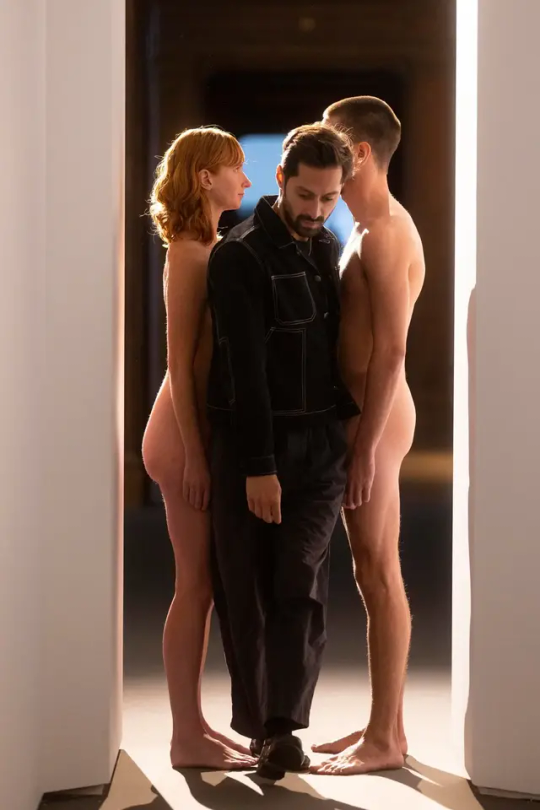
The doorway at the Royal Academy is heated so that the performers in “Imponderabilia,” who stand there for up to an hour at a time, don’t catch a chill. Credit... David Parry/Royal Academy of Arts, London
And even if visitors avoid squeezing past the naked bodies, Tarsia said, the work would get them thinking. “In art, when something riles you, that’s often where the interesting bit is,” Tarsia said. “Maybe if people choose not to go through the door, they’ll later reflect on why they made that choice,” he added.
Abramovic, who recently survived a life-threatening embolism and spent time in a coma, said that she did not mind if only a handful of visitors experienced “Imponderabilia” as she originally intended it. Artists, she said, committed to their performances no matter what happened during them.
“If there’s an earthquake, if electricity stops, if somebody walks into you, it’s all part of the work,” she said. “And if nobody passes, that’s still part of the work.”
Alex Marshall is a European culture reporter, based in London. More about Alex Marshall
116 notes
·
View notes
Text

marina abramovic and ulay
378 notes
·
View notes
Text


Rest Energy, Marina Abramović & Ulay, OOAK ceramic friendship necklaces.
“I was not in charge. In Rest Energy we actually held an arrow on the weight of our bodies, and the arrow is pointed right into my heart. We had two small microphones near our hearts, so we could hear our heartbeats. As our performance was progressing, heartbeats were becoming more and more intense, and though it lasted just four minutes and ten seconds, I’m telling you, for me it was forever. It was a performance about the complete and total trust.”— Marina Abramovic
SHOP.
#personal#the idol collective#marina abramović#rest energy#Ulay#art history#performance art#friendship necklace#ceramic jewelry#ceramics#art kid#handmade jewelry#shop small
679 notes
·
View notes
Text

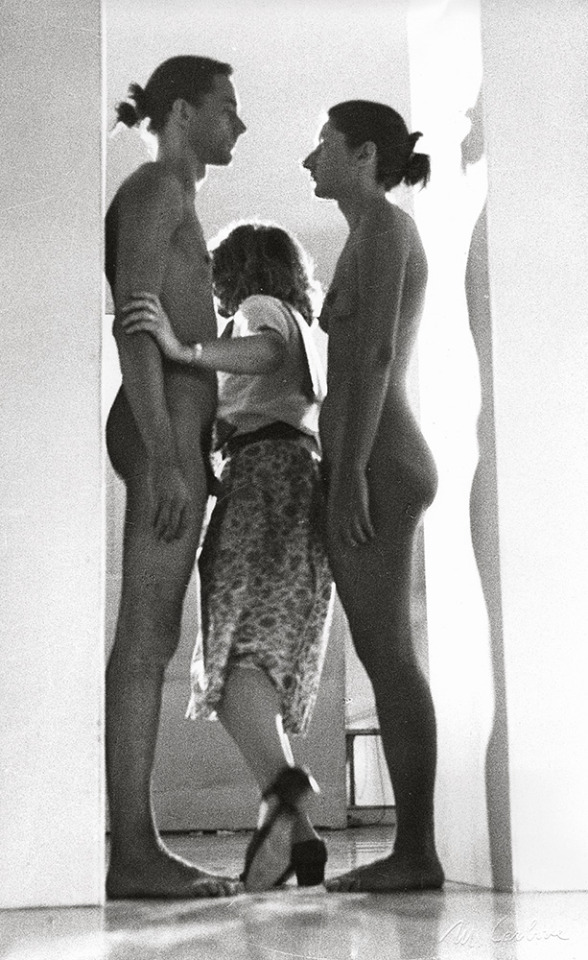
POSTO FISSO.
[Marina Abramović e Ulay a Bologna, 1977]
© Mario Carbone
43 notes
·
View notes
Photo

ulay and marina abramović’s relation works manifesto
284 notes
·
View notes
Photo
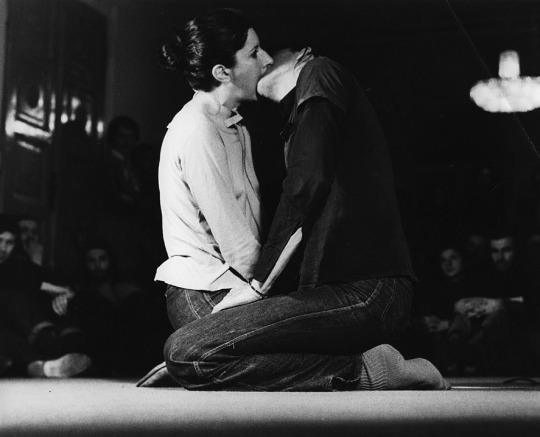
“BREATHING IN/BREATHING OUT”
MARINA ABRAMOVIĆ & ULAY // 1977
“Breathing In, Breathing Out is a performance piece by Marina Abramović and Ulay. It was performed twice, in Belgrade (1977) and Amsterdam (1978). For this performance the two artists blocked their nostrils with cigarette filters and pressed their mouths together, so that one couldn’t inhale anything else but the exhalation of the other. As the carbon dioxide filled their lungs, they began to sweat, move vehemently and wear themselves out; the viewers could sense their agony through the projected sound of breathing, which was augmented via microphones attached to their chests. It took them 19 minutes in the first performance and 15 in the second to consume all the oxygen in that one breath and reach the verge of passing out.
During the 19 minutes of the Performance at the Studenski Kulturni Centar in Belgrade, one hears the noise of their breathing in and out. Ulay commented on the Performance: ‘I breathe in oxygen and breathe out carbon dioxide.’ Abramović: ‘I breathe in carbon dioxide and breathe out carbon dioxide,’ and Ulay repeated Marina’s sentence. The second part of the Performance took place in November of the same year at the Stedelijk Museum in Amsterdam. Here, breath as the giver of life becomes a symbol of keeping one another alive, of interdependence and of the interchange between male and female principle.”
#marina abramović#marina abramovic#ulay#performance art#conceptual#contemporary art#black and white#monochrome#70s#serbian#art#u
1K notes
·
View notes
